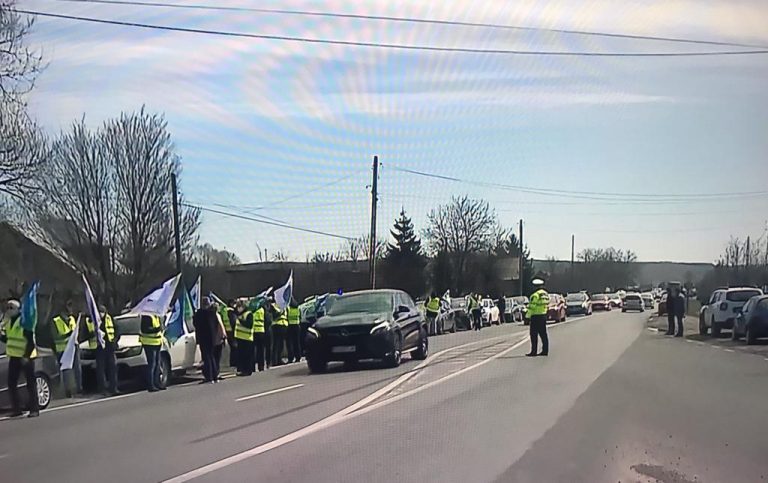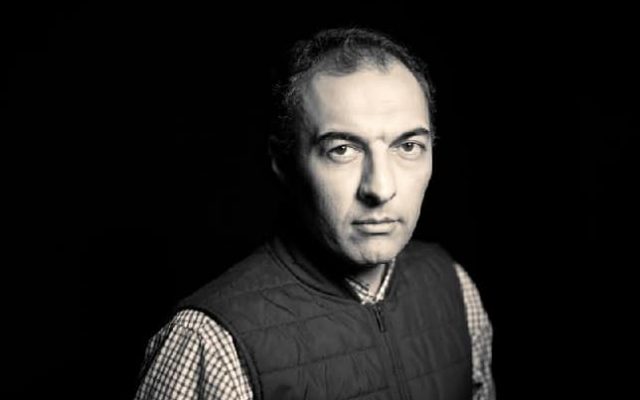
Protest motorizat la Iași pentru construcţia autostrăzii A8. Organizatorii manifestației cer alocarea de fonduri din PNRR pentru realizarea autostrăzii
Reprezentanţi ai asociaţiilor civice, ai mediului de afaceri, ai agricultorilor, transportatorilor, sau simpli cetăţeni din municipiul Iaşi participă, sâmbătă, la un protest motorizat în localitatea Cristeşti, Iași, la limita cu judeţul Neamţ.
Urmărește cele mai noi producții video G4Media
- articolul continuă mai jos -
Marşul motorizat este organizat de asociaţiile „Împreună pentru A8” şi „Mişcarea pentru Dezvoltarea Moldovei”.
Participanţii la acest marş de protest cer alocarea de fonduri prin PNRR pentru construcţia autostrăzii A8 sau Autostrada Unirii cum mai este cunoscută, care să lege estul de vestul ţării. De asemenea, protestatarii solicită scurtarea termenelor de proiectare şi de întocmire a documentaţiilor tehnice.
„Ne-am adunat astăzi pentru a lua parte la acest marş de protest pentru a arăta Guvernului că şi în Moldova avem nevoie de infrastructură şi că acum când există aceste fonduri prin PNRR Moldova nu trebuie uitată din nou sau lăsată la o parte în favoarea altor regiuni ale României. La acest marş participă oameni de afaceri din regiunea Moldovei. Este prima dată când oameni de afaceri participă alături de noi la marşuri de protest. Sunt asociaţii de transportatori, cluburi de motociclişti, de offroad, foarte mulţi cetăţeni care doresc ca şi mine o Moldovă dezvoltată, o Moldovă în care sper să ne putem creşte copiii în bune condiţii şi să rămână aproape de noi şi să nu mai emigreze. Noi avem speranţa ca firma care a semnat contractul cu CNIR să reuşească să facă în termenul care i s-a cerut studiul de fezabilitate şi proiectarea astfel încât să putem prinde măcar sectorul de la Târgu Frumos la Leţcani în viitorul PNRR. Marea noastră dorinţă ar fi ca şi şoseaua de centură a Iaşiului să fie şi ea inclusă, pentru că este importantă în perspectiva construirii unui spital regional şi dezvoltării aeroportului”, a declarat Ionel Apostol, reprezentant al Asociaţiei ”Împreună pentru A8”.
El a declarat că protestatarii se vor întâlni în localitatea Cristeşti, de unde vor transmite un apel către premier.
„La Cristeşti vom face joncţiunea cu toate grupurile care vin din Moldova. Acolo, timp de o oră, o oră şi jumătate, mai mulţi oameni de afaceri, e prima dată când vin oameni de afaceri din judeţul Iaşi, Roman, Suceava, Botoşani, vor transmite mesaje către prim-ministru şi ministrul Transporturilor. Presiunea va rămâne constantă până vedem utilajele lucrând pe această autostradă A8. Conform teoriei, autostrada ar trebui să fie finalizată până în 2030. Dacă avem posibilitatea să o facem prin PNRR, mă refer la Târgu Mureş – Miercurea Nirajului, Reghin – Târgu Neamţ – Moţca şi Târgu Frumos – Leţcani, dacă introducem prin finanţare PNRR aceste trei tronsoane am putea să le terminăm în 2026, iar cele patru tronsoane de pe A7 ar trebui să fie gata, dacă şi ele sunt finanţate prin PNRR, tot în 2026″, a declarat Cătălin Urtoi, reprezentant al ”Asociaţiei Împreună pentru A8”.
Oamenii de afaceri spun la rândul lor cât de necesară este o autostradă pentru dezvoltarea unei regiuni.
„Aşteptam de multă vreme să ieşim la un marş puternic care să impresioneze ţara, să impresioneze Guvernul şi să îi obligăm să finanţeze autostrada Iaşi – Târgu Mureş. Investiţiile nu vin din sud, din Bucureşti, vin din vest, noi exportăm în vest, 75% din comerţul exterior al României se îndreaptă spre vest. Unde mergem? Cum mergem? (…) Este o mare problemă lipsa autostrăzii pentru Moldova. Sper ca acest tronson Târgu Neamţ – Iaşi să fie finanţat prin PNRR şi să nu ne amâne peste ani. Următorii ani ar putea însemna peste 2030. Dacă acum se finanţează prin PNRR e posibil ca acest ciot de autostradă, comparativ cu alte autostrăzi din Europa, să fie gata în 2026. Suntem optimişti”, a afirmat Marian Berdan, unul dintre oamenii de afaceri participanţi la marşul motorizat, citat de Agerpres.
Sursa Foto: Captura Tv/ Digi24

Donează lunar pentru susținerea proiectului G4Media
Donează suma dorită pentru susținerea proiectului G4Media
CONT LEI: RO89RZBR0000060019874867
Deschis la Raiffeisen Bank




10 comentarii